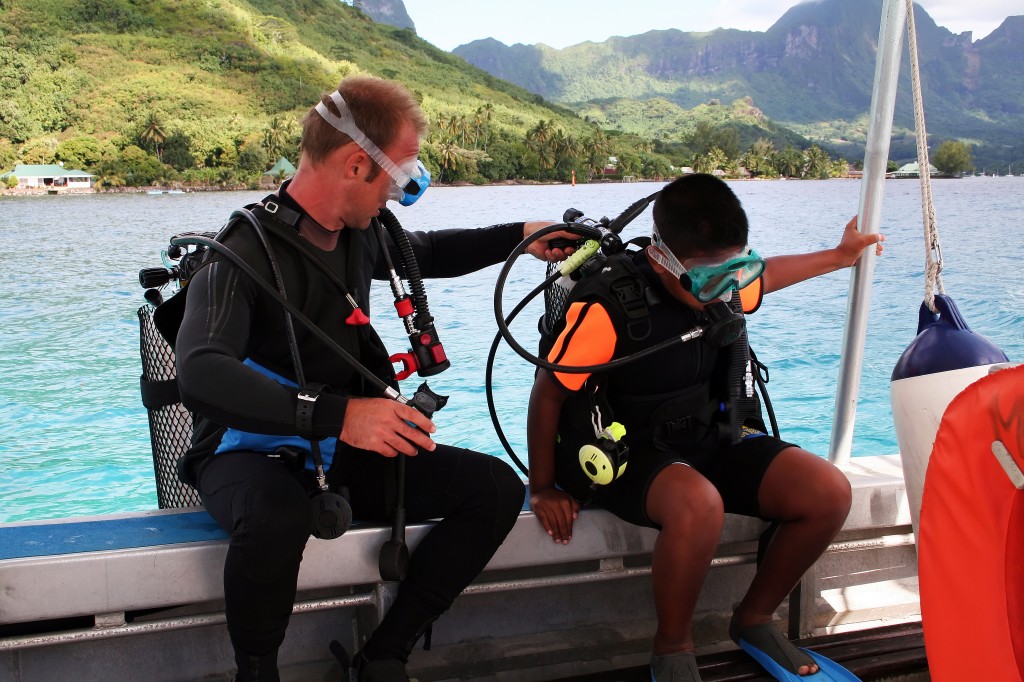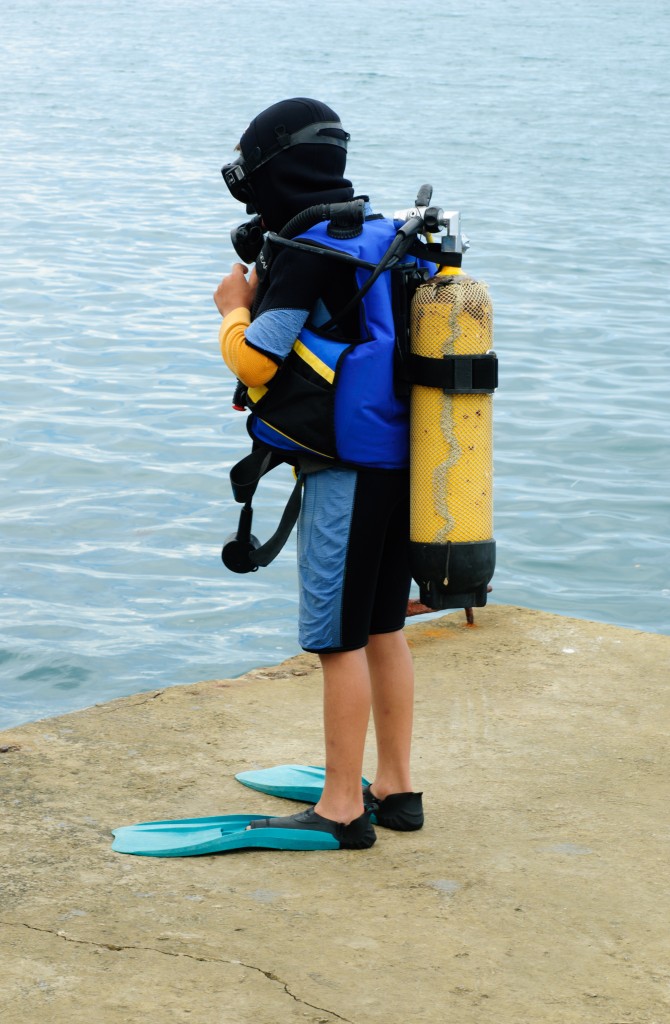Most kids love water, and are often confident and daring. I’ve seen children on try dives who were more natural in the water than some advanced adult divers.
As with many activities, learning when young can lead to a life-long interest, as well as making skills much easier to master — I learned to ski at 5 years old and am still obsessed. Keep in mind though that it’s got to be fun for the kids. So how do you go about getting your kids certified?
Scuba Diving Options for Kids
Many adult courses are suitable for older children, and most scuba-training agencies have different options for getting younger kids interested and certified, when they’re old enough. Lets take a look at the options from some of the main training agencies:
SSI – https://www.divessi.com/children
SSI’s child-specific course revolves around the Scuba Rangers program, which is aimed at ages 8 to 12 and is broken down into five levels, with colors much like marshal-arts belts.
- Red Ranger — Kids demonstrate their swimming skills and learn how to snorkel with a mask, a snorkel and fins. How to help other children is also emphasized.
- White Ranger — Potential divers are introduced to diving equipment. After learning what everything is and how it’s used, rangers go into the pool with equipment for the first time.
- Blue Ranger — Rangers learn new diving exercises in the pool such as how to float in the water.
- Silver Ranger — Children play games underwater while wearing diving equipment to increase their comfort and practice the diving techniques they’ve learned so far.
- Demo Ranger — Children are able to “teach” diving to parents, siblings, and friends by doing demonstrations of the skills they’ve learned.
SSI scores extra points because all Scuba Ranger instructors are specially trained and courses are on a 1 to 2 ratio. SSI instructors can only teach if affiliated with an SSI store, so there is good accountability.
For children aged 10 to14 SSI offers junior versions of the full courses. These are generally the same as the adult versions, but the certified child must dive with an appropriately certified adult, guardian or professional.
PADI – http://www.padi.com/
PADI’s Seal Team is for children 8+ and should not be confused with the Bubble Maker, which is more of a single-day experience. Kids need to complete a 2-part program with the Seal Team. Part one involves completing what PADI calls AquaMissions 1 to 5, which teach kids the basics of diving. Buoyancy control, mask clearing and regulator recovery are all covered. Once these five missions have been completed, kids become PADI Seal Team members. Part two consists of five more specialty AquaMissions, which, though not outlined on the PADI website, can include:
- Creature ID: Identify marine creatures and use hand signals
- Environmental: Protecting the environment while diving
- Inner Space: Peak Performance Buoyancy for kids
- Navigation: Underwater navigation
- Wreck: A simulated shipwreck dive
- Night: Night Diving using lights
- Safety: Diving safety and safety equipment
- Search & Recovery: Recover lost items
- Skin Diver: Skin dive more effectively
- Snapshot: Underwater photography
Any kids completing 10 of the specialty AquaMissions qualify to become Master Seal Team members. PADI does not mention teaching ratios or instructor requirements; check these details with your local PADI dive center.
Kids aged 10 and up can start on PADI’s junior courses, beginning with Junior Open Water Diver. Once they’re 12 years old, kids can start on junior versions, though they must dive with an appropriately certified adult.
NAUI – http://www.naui.org/recreational_divers.aspx
At the time of writing NAUI only offers junior versions of adult courses and no specific program for kids. Junior Skin Diver is a snorkeling course that is available for kids aged 8+. Starting at 10 years old, kids can take the Junior Scuba Diver course, which is much the same as SSI and PADI’s Open Water courses.
SDI – http://www.tdisdi.com/sdi/get-certified/future-buddies-program/
The SDI website is a bit scant on information and only with a bit of searching and Googling do you find the Future Buddies program, which is geared toward kids aged 8 to 9. The program covers topics such as:
- History of diving
- The aquatic environment
- Physics and physiology
- Equalization techniques
- Lung over-expansion problems
- Breathing air under pressure
- Scuba equipment
There are a number of prerequisite skills that must be successfully completed to finish the course. Again like the other agencies, kids can start on the junior versions of the full certifications when they reach 10 years old.
CMAS – http://www.cmas.org/114-33387.php
CMAS offers a system of three different levels for kids. Bronze is for kids 8 to 12 years old; Silver is for kids 10 to 12 years old; and Gold is for kids 12 to 14 years old. I suggest that parents interested in CMAS courses talk directly to a CMAS instructor, as their website is pretty bewildering and offers very little in the way of specifics, especially on the English version of the site.
Having listed the main offerings from scuba agencies, it’s fairly easy to see that there are a lot of similarities. You can also see that the bigger agencies have put some extra thought into making specific programs to engage younger kids. I like SSI’s clear approach to safety, with stated ratios and specifically trained instructors. But as with all diving courses I think it’s too easy to get hung up on specific agencies — in truth it’s the instructor who makes the difference, and I advise parents to investigate and choose the one they feel most comfortable with. And don’t forget — it’s all about the kids having fun.



